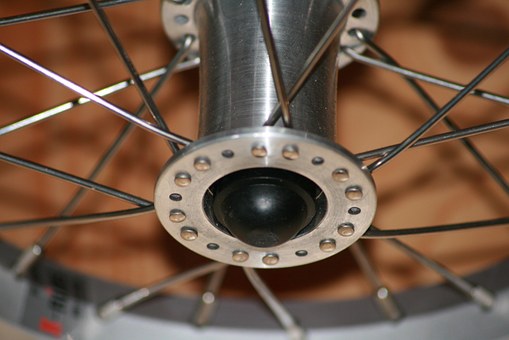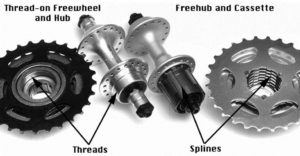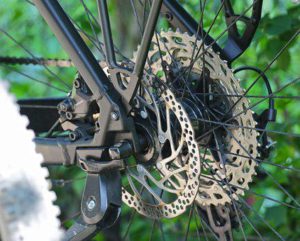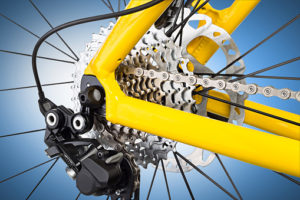There’s forever been debate and disarray about the distinction between a freewheel vs freehub. This is because the two terms are frequently utilized conversely, making cyclists sit around and exert. While endeavoring to arrange parts or perform work on the bicycle.
Knowing the contrast between a freewheel vs freehub or (cassette hub) is likewise the information. You should know if you are into older bicycles.
It’s most likely worth making sense of precisely what tapes and freewheels are. At the bicycle’s rear, different sprockets append to the back wheel, known as ‘back pinions,’. And give various stuff choices to the riders.
Over the historical backdrop of the bike, the number of sprockets has developed. It was three or four before World War II; from the 1950s to the 1970s, it depended on five, and we generally see from eight to twelve cutting-edge bicycles.
As more additional further, the space among sprockets pointed. They are appended utilizing two unique components – the Cassette and the Freewheel. Even though they look the same and have a similar capability. When fitted appropriately, they work distinctively and are not tradable.
Yet, what are they? How would they vary? How would you connect them? In particular, what is the best framework for you freewheel vs freehub?
The gears on the back of your bike are generically referred to as a cluster, but there are two different systems – freewheel vs freehub.


Most cassette hubs utilize a strung lockring to hold the sprockets onto the Freehub body through the splines. A unique splined device fits the scored opening in the lockring. The lockring has an ordinary right-hand string; go clockwise to fix it. To eliminate the locking, you want to turn it counterclockwise. Because of the wrench, the cassette hub will freewheel, so you want a chain whip to hold the tape while you release the lock ring.
Table of Contents
Recognize freewheel vs freehub
Assuming you’re utilizing a bicycle made after around 1980, it’s almost certain that you are running a cassette, freehub plan. More seasoned bicycles with seven cogwheels or less commonly utilize a freewheel. Most contemporary bicycles with eight cogwheels or more utilize a cassette and freehub.
Although some 7-speed frameworks are being used. The different appearance of a freewheel vs freehub isn’t perceptible to the typical cyclist. While contrasting Shimano frameworks, which are more significant.
Although some 7-speed frameworks are being used. The different appearance of a freewheel vs freehub isn’t perceptible to the typical cyclist. While contrasting Shimano frameworks, which are more significant.
Our Cycling Brand
Whether you pick a freewheel vs freehub (cassette) relies upon which back tire is fitted to your bicycle. (Generally, present-day or mid to high-go bicycles are equipped with cassette-prepared wheels). You can figure out what your bike is viable with when you buy/review/or get some information about your bicycle. We should investigate everyone.
Freewheel Vs Cassette
To pursue the ideal decision, you want to know the contrast between a freewheel and a free hub, so we should investigate and look at it.
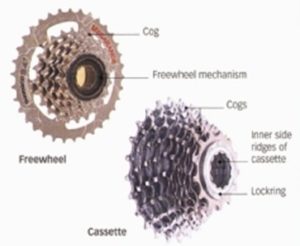
The Freewheel
The freewheel is a block of machine gear pieces that screw straightforwardly onto strings on the back tire. There is no requirement for it to be mounted onto a center point. It commonly accompanies somewhere between 1 and 7 pinions, and finding a freewheel on a cutting-edge bike is uncommon.

You do anyway. Find them on some new single-speed bicycles. A freewheel that accompanies one pinion can likewise come fixed. Implying that you generally must pedal except if the bicycle is fixed. Although
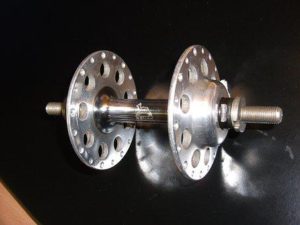
You do anyway. Find them on some new single-speed bicycles. A freewheel that accompanies one pinion can likewise come fixed. Implying that you generally must pedal except if the bicycle is fixed. Although
Freewheel vs Freehub
Freewheel is described above, a block of gear teeth that the chain sits on straightforwardly that drives the wheel. The wrench framework is incorporated into the league, meaning the wheel can have a bunch of strings the block screws onto.
In any case, a freehub has no pinions, and it is the center on the back tire that cassette sprockets slide onto. This part has a wrench framework inside those locks when the tape is driven by the chain, making the wheel turn.
The Free hub
Since their presentation in the last part of the 1970s, cassettes have been utilized on various bikes. Beginning with the excellent quality and, after some time, have opened up on more affordable bicycles. Today by far, most derailleur bikes utilize this more current plan.


The machine gear pieces space individually onto the tape body on an accessible hub. They are held set up with a locking nut. They can go from 7 gear-teeth as far as possible up to 12 velocities on high-range bicycles. For the most part, they come fitted on mid to high-run bikes. Permitting the rider to have more extraordinary adaptability over the territory. And giving them more speed choices.
Cassettes a street bike
Most generally, an 11,12, or 13-tooth little sprocket and 21 and 32 teeth huge sprocket. This is because a street bicycle is expected to take more modest leaps between gears than a more vigorous model, for instance, an off-road bike. The more significant part accompanied a 12 e matched with a more miniature or standard chain set for most level cycling territories. If the bicycle is utilized for slope climbing or you battle with slants.
A lower proportion biggest sprocket (at least 27 teeth) will be better for remaining turning, as opposed to crushing. While picking, guarantee you understand what sort of sprockets your derailleur can deal with. A more extended confine back derailleur requires. Bigger sprockets as auditioners will be expected to circumvent the more prominent teeth measure. A little derailleur with an enormous sprocket risks overextending and may prompt slackness.
Off-road Bike Cassettes
Because of the wide assortment of landscapes and slopes handled with rough terrain riding. These require an enormous scope of sprocket sizes. The improvement of the 11,12, and presently 13-speed tapes was a pivotal turning point for trail-blazing bicycles.
More sprockets imply that the greatest cogwheels have more teeth. This thus makes more short cog wheels for contact climbs and lessens the hole between each stuff. It means that trail-blazing bicycles never again need the triple chain set. Decreasing mess, weight, and mechanical issues.
Which Is Better? Freewheel vs freehub
A freewheel has fewer cogwheels, so it is more qualified for relaxed riders. Who doesn’t need the more extensive determination of pinion wheels accessible from a tape? It’s greatly improved drifting, permitting you to rest your legs, and when done accurately.
It can be helpful while climbing slopes and descending them. Simultaneously, the freewheel isn’t as great because of the choice to drift while needing to get exercise from a bicycle ride. They can likewise lead you to lose your pedal stroke, implying that you lose pace on level territory.
Due to their individual components, casseroles are less bulky, allowing them to be lighter than freewheels. Changing a cassette usually requires more tools. In contrast, a freewheel that has been on a bicycle for some time can become seized and undoubtedly difficult to remove. While a tape does not have this problem. A free hub is the better choice if you wind up riding on different landscapes at different rates. These are the key point between freewheel vs freehub you can choose which one is good for you.
FreeWheel vs FreeHub
There is the main difference between freewheel vs freehub.
Freewheel
Usually 5-, 6-or 7-speeds
Extractor splines don’t turn when sprockets are turned in reverse
Free Hub
Usually 7-, 8-, 9-or 10-speeds
Lockring splines turn with sprockets when turned in reverse
Numerous tape Freehubs have an unmistakable lump on the right finish of the center point barrel.

